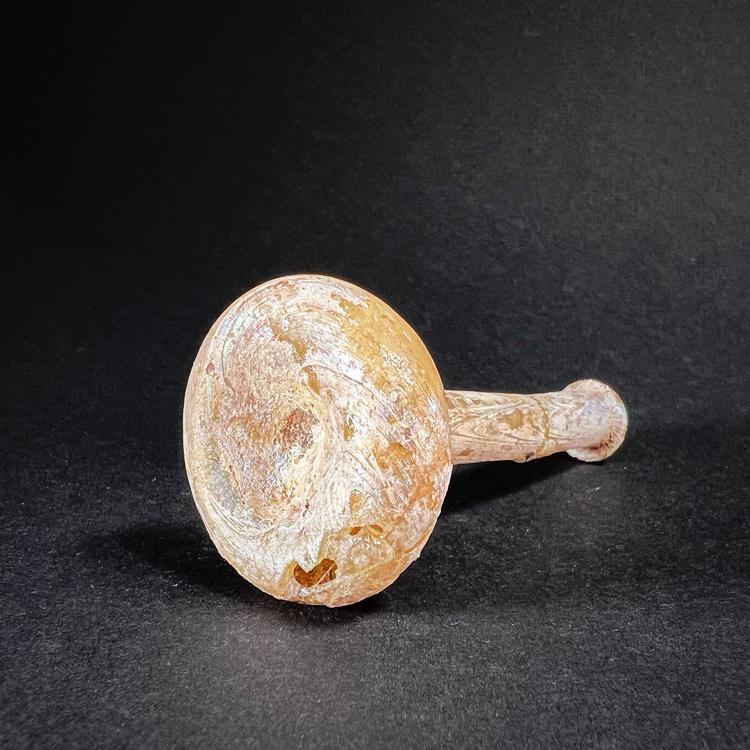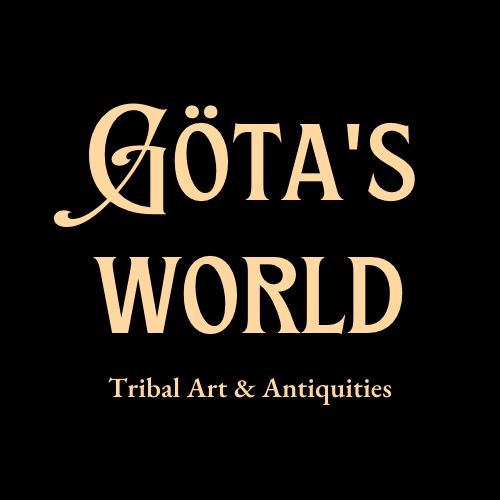Roman Glass Unguentaria
Roman Glass Unguentaria
Couldn't load pickup availability
The Roman Empire, c. 100-200AD.
This stunning Roman glass bottle, known as an unguentaria (or unguentarium, balsamarium, and lacrimarium), was likely used to hold oils, perfumes, or other liquid and powdered substances. The small-sized, free-blown glass bottle features a heavily compressed spherical body, an elongated cylindrical neck, and a flared, in-folded rim with a flat bottom. This classic design was widely used across the Roman Empire from the first to the early fourth centuries.
Unguentaria often appear among Roman grave goods, though the exact purpose in funerary contexts is still uncertain. These bottles may have been used in rituals or as offerings, possibly containing oils, wine, or incense, intended to honor the deceased or gods.
Roman glassmakers were pioneers of advanced techniques, developing soda-lime glass more than two millennia ago. This glass was made from silicon, sodium, and calcium oxides, often with metallic oxides added for color. Copper was used to create shades from turquoise to light blue, green, and red, while cobalt provided a striking deep blue. Manganese and antimony were used for vibrant yellows, whites, and purples, and iron created colors ranging from light blue to brown, green, and black. These colors often mimicked precious gemstones like lapis lazuli and amethyst.
This unguentarium is a beautiful example of Roman glassmaking, showcasing the skill and innovation of the ancient craftsmen.
Moderate condition. Repaired. Chip and fractures. The exterior of the yellowish, pale olive-green vessel has developed lustrous layers of silvery and rainbow-hued iridescence that elegantly complement its delicate form. The surface of the interior is calcified and encrusted with minerals over the years. Size approx. 8,0cm x 3,7cm x 3,7cm.
Provenance: From the collection of painter and tv producer Ole Braunstein (1917–1999). Donee of the Høyen Prize in 1984.




-
Shipping
The shipment will be prepared in the course of 3-5 days and dispatched via Posti Group Oyj or purchased item(s) can be picked up from our shop during the store's opening hours (Tarkk’ampujankatu 4, 00140, Helsinki, Finland). Within the Finland, all items are shipped via Posti Group Oyj unless otherwise requested. We pack the items carefully and mainly in recycled materials because we want to save nature. You will receive the tracking number for your items by e-mail.
-
Returns
Returns and exchange will be accepted within fourteen days (14) of receipt at the purchaser’s cost to include freight and packaging. Items must be returned in the same condition as when they were shipped, and will not be accepted if damaged or altered in any way. Please inform us via email (info@gotanmaailma.fi) or by calling +358408408352 before sending. We do not accept returns more than 14 days after delivery.




